Related Research Articles

The Gaza Strip, or simply Gaza, is a small, densely populated territory located on the eastern coast of the Mediterranean Sea. It is the smaller of the two Palestinian territories. Gaza is bordered by Egypt on the southwest and Israel on the east and north.

The Gaza–Israel barrier is a border barrier located on the Israeli side of the Gaza–Israel border. Before the 2023-24 Israel-Hamas war, the Erez Crossing, in the north of the Gaza Strip, used to be the only crossing point for people and goods coming from Israel into the Gaza Strip, with a second crossing point, the Kerem Shalom border crossing, used exclusively for goods coming from Egypt, as Israel didn't allow goods to go directly from Egypt into Gaza through the Egypt–Gaza border, except for the Salah Al Din Gate, opened in 2018.
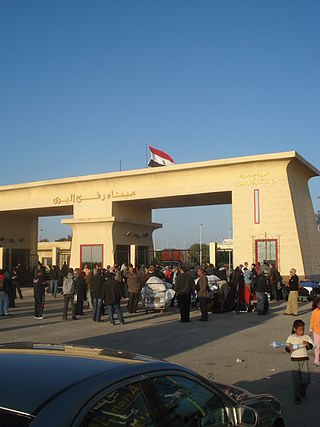
The Rafah Border Crossing or Rafah Crossing Point is the sole crossing point between Egypt and Palestine's Gaza Strip. It is located on the Egypt–Palestine border. Under a 2007 agreement between Egypt and Israel, Egypt controls the crossing but imports through the Rafah crossing require Israeli approval.

The Erez Crossing, also known as the Beit Hanoun Crossing, is a border crossing between the Gaza Strip and Israel. It is located at the northern end of the Gaza Strip, between the Israeli kibbutz of Erez and the Palestinian town of Beit Hanoun.

On 23 January 2008, Hamas militants in the Gaza Strip set off an explosion near the Rafah border crossing, destroying part of the 2003 wall. The United Nations estimates that as many as half the 1.5 million population of the Gaza Strip crossed the border into Egypt seeking food and supplies. Due to fears that militants would acquire weapons in Egypt, Israeli police went on increased alert.

A blockade has been imposed on the movement of goods and people in and out of the Gaza Strip since Hamas's takeover in 2007, led by Israel and supported by Egypt. The blockade's current stated aim is to prevent the smuggling of weapons into Gaza; previously stated motivations have included exerting economic pressure on Hamas. Human rights groups have called the blockade illegal and a form of collective punishment, as it restricts the flow of essential goods, contributes to economic hardship, and limits Gazans' freedom of movement. The blockade and its effects have led to the territory being called an "open-air prison".

The Gaza War, also known as Operation Cast Lead, also known as the Gaza Massacre, and referred to as the Battle of al-Furqan by Hamas, was a three-week armed conflict between Gaza Strip Palestinian paramilitary groups and the Israel Defense Forces (IDF) that began on 27 December 2008 and ended on 18 January 2009 with a unilateral ceasefire. The conflict resulted in 1,166–1,417 Palestinian and 13 Israeli deaths. Over 46,000 homes were destroyed in Gaza, making more than 100,000 people homeless.
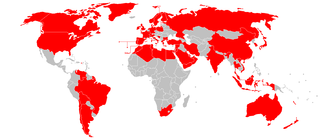
Following the 2008–2009 Israel–Gaza conflict, an international conference took place on 2 March 2009 in Sharm El-Sheikh, Egypt, where donor countries and international bodies pledged almost US$4.5 billion for humanitarian and reconstruction aid for the Gaza Strip. These funds bypassed Hamas, with the PA in collaboration with the donor community taking the lead in delivering and distributing the funds. Damage from the Israeli offensive was estimated to be almost $2 billion. However, actual transfers of aid had been beset by difficulties.

Egypt–Palestine relations are the bilateral relations between the Arab Republic of Egypt and the State of Palestine. Egyptian President Gamal Abdel Nasser was a strong supporter of the Palestinian cause and he favored self-determination for the Palestinians. Although the Egyptian government has maintained a good relationship with Israel since the Camp David Accords, most Egyptians strongly resent Israel, and disapprove of the close relationship between the Israeli and Egyptian governments.
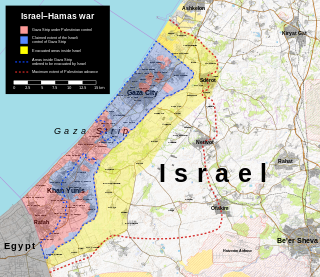
An armed conflict between Israel and Hamas-led Palestinian militant groups has been taking place chiefly in the Gaza Strip since 7 October 2023. The fifth war of the Gaza–Israel conflict since 2008, it has been the deadliest for Palestinians in the entire Israeli–Palestinian conflict, and the most significant military engagement in the region since the 1973 Yom Kippur War.
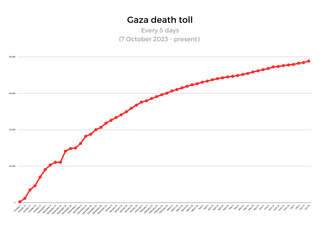
On 9 October 2023, Israel intensified the blockade of the Gaza Strip after the 2023 Hamas-led attack on Israel and the ensuing Israel–Hamas war. Israel's Defense Minister Yoav Gallant announced a "total blockade", blocking the entry of food, water, medicine, fuel and electricity. Egypt who controls Rafah Border Crossing has supported the blockade by not allowing Palestinians to enter Egypt.

The Israeli invasion of the Gaza Strip is a major part of the Israel–Hamas war. Starting on October 7, 2023, immediately after the Hamas-led attacks, Israel began the bombing of Gaza Strip; on October 13, Israel began ground operations in Gaza and on October 27 full-scale invasion was launched. Israel's campaign, called Operation Swords of Iron, has two stated goals: to destroy Hamas and to free the hostages. More than 35,000 Palestinians have been killed in Gaza since the Israeli operation began, including more than 7,800 children and 4,900 women, with another 10,000 people missing and presumed dead under the rubble of destroyed buildings. There are allegations that Israel has committed war crimes and genocide during the invasion.
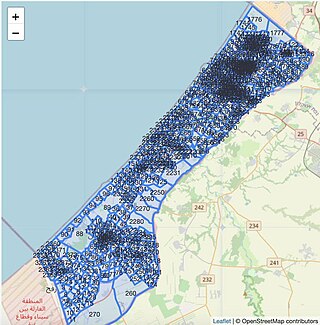
During the Israel–Hamas war, the Israeli military ordered most residents of Gaza to evacuate their homes, displacing hundreds of thousands of people and contributing to a broader humanitarian crisis in the territory. It is the largest displacement of Palestinians in 75 years. 90 percent of Gaza's population has been displaced at least once since October 2023. Palestinians have described the evacuation as the "second Nakba."
Events of the year 2024 in Israel.
Events in 2024 in the Palestinian territories.
The population of the Gaza Strip is facing starvation and famine as a result of Israeli airstrikes during the Israel–Hamas war and an Israeli blockade, including of basic essentials and humanitarian aid. Airstrikes have destroyed food infrastructure, such as bakeries, mills, and food stores, and there is a widespread scarcity of essential supplies due to the blockade of aid. A survey in May 2024 suggested 85% of children under five in Gaza spent entire days without food. This situation has caused starvation for more than half a million Gazans and is part of a broader humanitarian crisis in the Strip. Describing an Integrated Food Security Phase Classification (IPC) report in March, António Guterres said it was the "highest number of people facing catastrophic hunger" recorded on the IPC scale since its inception in 2004. Leading famine scholar Alex de Waal said in March that we "are about to witness" the most intense man-made famine since the Second World War.
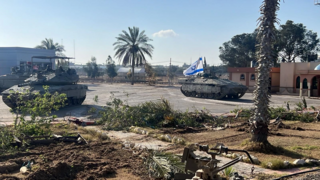
On 6 May 2024, Israel began a military offensive in and around the city of Rafah as part of its invasion of the Gaza Strip during the Israel–Hamas war.

During the Israel–Hamas war, humanitarian aid entered into the Gaza Strip via air, land and sea. Early in the war, significant issues arose with humanitarian aid. Israel's initial blockade on Gaza, immediately following the October 7 attacks, prevented the entry of humanitarian aid for several weeks. As the war progressed, aid was allowed at limited quantities. Entities such as Oxfam, the European Union, United Kingdom, and United Nations stated that Israel is deliberately blocking humanitarian aid. These limitations have contributed to a severe humanitarian crisis and a risk of famine. Israeli airstrikes and continued restrictions on aid entry led to widespread shortages of food and supplies. Distribution of aid within Gaza has also been an issue, as police have refused to protect aid convoy after airstrikes killed eight police in Rafah. Humanitarian aid agencies warned of the dire humanitarian consequences of aid restrictions, particularly after major Western donors announced they would cease funding UNRWA, the major aid relief agency in Gaza.
The flour massacre occurred in the Gaza Strip on 29 February 2024, when at least 118 Palestinians were killed and 760 injured after Israeli forces opened fire while they were seeking food from aid trucks on the coastal Al-Rashid Street in Gaza City. The incident was the deadliest mass casualty event to have taken place in the Gaza Strip since the start of Israel's operation during the Israel–Hamas war, and took place a day after the World Food Programme reported that more than half a million Palestinians were at risk of famine in Gaza.
In March 2024, during the Israel–Hamas war, civilians seeking humanitarian aid were attacked at the Kuwait Roundabout near Gaza City. According to the Gaza’s health ministry, 20 Gazans were killed and 155 were wounded. The Israel Defense Forces (IDF) responded to the accusations saying they did not open in fire at the convoy, claiming that armed militants fired against the Gazan civilians while waiting for the aid convoy to arrive.
References
- 1 2 "UN rights office says 'anarchy' spreading in Gaza". Reuters. 19 July 2024. Retrieved 19 July 2024.
- ↑ Sunghay, Ajith (19 July 2024). "Observations from Gaza by Head of UN Human Rights office for the Occupied Palestinian Territory Ajith Sunghay". UN Human Rights Office for the Occupied Palestinian Territory. Retrieved 19 July 2024.
- ↑ "Gaza 'soon without fuel, medicine and food'". BBC News . 9 October 2023. Archived from the original on 9 October 2023. Retrieved 9 October 2023.
- ↑ Raine, Andrew; Lau, Chris; Berlinger, Joshua; Sangal, Aditi; Poole, Thom; Meyer, Matt (7 October 2023). "Israel-Gaza conflict erupts into fighting after attack by Palestinian militants". CNN. Archived from the original on 7 October 2023. Retrieved 21 March 2024.
- ↑ Bodkin, Henry (20 November 2023). "Hamas used food aid sacks to smuggle bullets into Gaza, claims Israel". The Telegraph. ISSN 0307-1235. Archived from the original on 21 March 2024. Retrieved 21 March 2024.
- ↑ Hansler, Jennifer (25 June 2024). "Gaza population at risk of famine as it continues to face emergency levels of hunger, report finds". CNN. Retrieved 4 July 2024.
- ↑ Batrawy, Aya. "High risk of famine across Gaza as hunger spreads, experts say". NPR. Retrieved 4 July 2024.
- ↑ "New famine alert for Gaza where families go days without food". United Nations. Retrieved 4 July 2024.
- 1 2 3 4 5 6 7 8 Bashir, Mahmoud (12 June 2024). "Gaza's social collapse: Popular committees step up". Mada Masr. Retrieved 19 July 2024.
- ↑ "Renewed wave of deadly Israeli strikes on Gaza must stop – UN Human Rights Office". Office of the United Nations High Commissioner for Human Rights. 19 July 2024. Retrieved 19 July 2024.
- ↑ Cloud, David (February 27, 2024). "As Israel Drives Out Hamas, Lawlessness Hampers Gaza Aid Efforts". The Wall Street Journal .
- ↑ Ravid, Barak (Feb 29, 2024). "Dozens of Palestinians killed in incident around Gaza aid convoy". Axios . Archived from the original on 4 March 2024. Retrieved 4 March 2024.
- ↑ Le Masurier, Jessica. "'Flour massacre': Aid delivery turns deadly in Gaza as UN warns famine 'almost inevitable'". www.msn.com. Archived from the original on 25 April 2024. Retrieved 16 March 2024.
- ↑ Le Masurier, Jessica; Khaled, Fatma (March 2024). "'Flour Massacre': Lifesaving Aid Becomes a Deadly Struggle in Gaza". PassBlue. Archived from the original on 2 March 2024. Retrieved 16 March 2024.
- 1 2 Yee, Vivian; Boxerman, Aaron (2024-06-19). "Anarchy Hinders Gaza Aid Efforts, Despite Daily Combat Pause". The New York Times . ISSN 0362-4331 . Retrieved 2024-06-26.
- 1 2 "Israel's pledge to guard an aid route into Gaza falls flat as lawlessness blocks distribution". AP News. 2024-06-20. Retrieved 2024-06-26.
- ↑ "UN tells Israel it will suspend aid operations across Gaza without improved safety". AP News . 25 June 2024. Retrieved 26 June 2024.
- ↑ Nichols, Michelle (July 15, 2024). "Israel allows UN to bring in more equipment amid Gaza lawlessness". Reuters .